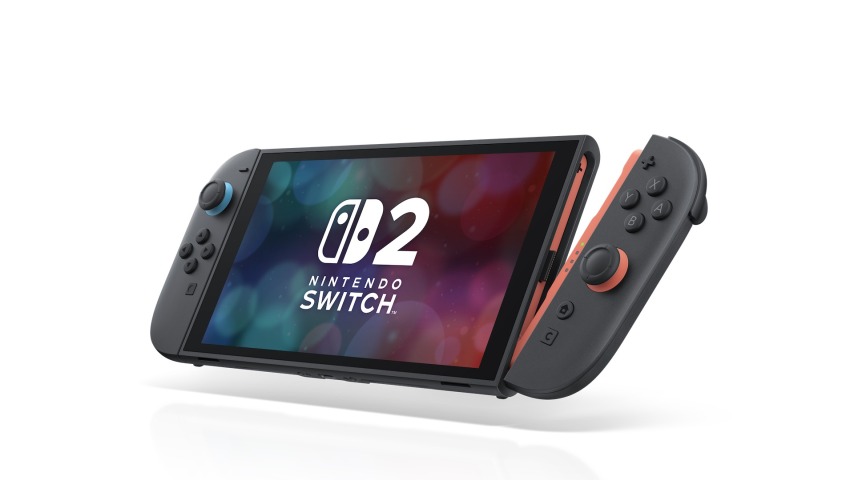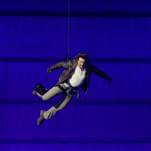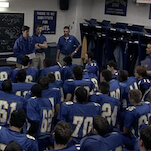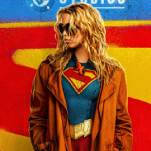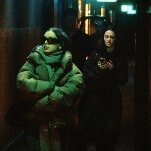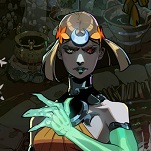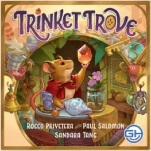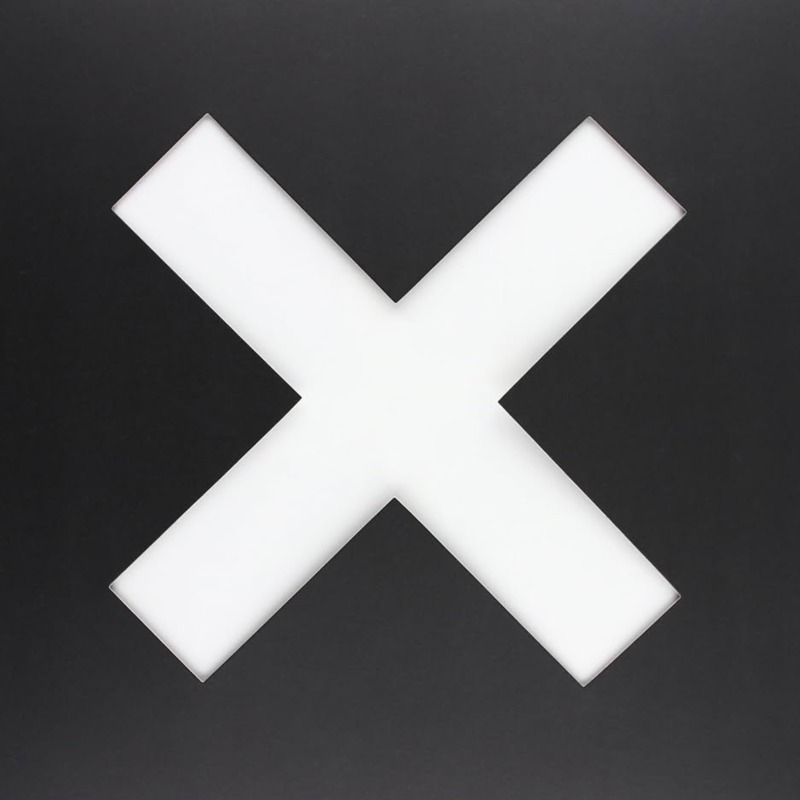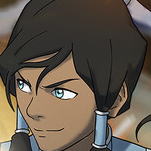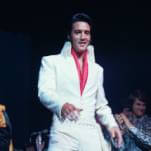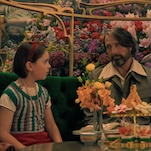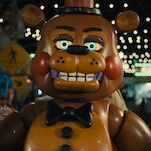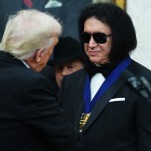[Editor’s note: This week’s installment of our Game Theory column is running a day early to hit embargo deadlines. You can read past installments of Game Theory here, or simply sound off with your own thoughts on the gaming stories of the day in the comments below.]
The story of the Switch 2 is all there in the name, really.
It might actually be the most boring console name that Nintendo, which flew me out to a preview event this week to spend five hours going hands-on with the new hardware, has ever selected. No weird portmanteau, no goofball naming convention, not even an extraneous “Super.” It’s simply the massively popular, massively successful Switch—only moreso.
That basic “if ain’t broke, don’t fix it” approach was on prominent display with yesterday’s Nintendo Direct press video, which members of the gaming press watched in an auditorium together on Wednesday morning before being unleashed on the games, and which served as an unofficial blueprint for what would be available to play at the preview event. Of the 40-ish games on display in the Direct, only a handful were Switch 2 exclusives, and only four of those were available for press to play in New York: Mario Kart World, Nintendo Switch 2 Welcome Tour, Drag X Drive, and Donkey Kong Bananza. Each, in its own way, represents something about Nintendo’s thinking as it attempts to very carefully, very expensively build on its 2017 success story, so let’s take them each in order.
In other words: a safe, technically impressive offering, just like the Switch 2—which then got its narrative blown all to hell by conversations about pricing… just like the Switch 2. Cost was the one topic nobody official at the Nintendo press event wanted to get into on Wednesday, up to and including shooting down a question about it at a developer roundtable Q&A late in the day. But as soon as the Direct was over, murmurings started spreading through the crowd that MK World would be launching at a largely unprecedented $80 price point, attached to a console that would, itself, be retailing at $449.99 in the United States. (You can save yourself 30 bucks when the system launches on June 5 by getting a Mario Kart World bundle that retails at $499.99, but that represents a fairly radical definition of the word “saving.”) Launching at the same price point as the PlayStation 5 would be shocking enough, given the different levels of pure processing power on display. But revealing that at least some of the system’s flagship games would be breaking the already-unpopular $70 price tag we’ve all been begrudgingly swallowing for “next-gen” titles for a couple of years now was a genuine eyebrow-raiser. It set a strange tone for everything to follow, no matter how fun it was to see Peach’s various driving costumes.
Moving on, then, to Welcome Tour, probably the oddest “game” on display at the Switch 2 Experience: a series of trivia points, mini-games, and tech demos that got one of the biggest reactions out of the press crowd during the Direct—not from its content, but from the moment when it was revealed that it’d be a paid experience. (No official price has been set.) Don’t get it twisted: Welcome Tour is genuinely cool, with lots of cute little demos that demonstrate all the neat tricks the Switch 2 can pull off. (A “shaking maracas” demo, for instance, served as a remarkable demonstration of Nintendo’s increasingly impressive rumble technology, creating radically different sensations as you changed the weight and size of the virtual objects “inside” your Joy-Con 2s.) But an incredibly well-made sales pitch is still a sales pitch, and charging players so they can actually show off what their $450 toy can accomplish is a baffling decision. Handled properly, Welcome Tour could have been a warm and welcoming system pack-in even more addictive than Sony’s Astro’s Playroom, which it’s clearly modeled on. (You run around on a little Switch 2, although the music isn’t half as good.) As-is, it’s cool with an asterisk, not an exclamation point.
Which is also where I find myself falling on the system’s much-touted mouse controls, the one truly innovative addition to the Switch 2’s bag of tricks. (Basically, you can take a Joy-Con 2, turn it sideways so that the flat part is facing down, and use it as a slightly awkwardly sized mouse. Don’t have a mouse-friendly surface in the room where you normally play console games, because no one does? Nintendo reps kept telling people, with a straight face, to just use their pants.) (It kind of works, as long as you don’t have keys in your pocket.) Nintendo had a couple of different games meant to show off the mouse controls at the event, including a port of Civilization VII that worked fairly well, and the Switch 2 version of the upcoming Metroid Prime 4: Beyond, which managed the impressive trick of swapping between mouse controls and a more traditional control scheme on the fly when it detected the controller being rotated. (As to the actual effectiveness of playing Prime 4 in “mouse mode,” I’d call it about 95 percent there—the tracking works well enough, but the Joy-Con 2’s slimness and light weight make for an awkward feel in the hand at times, and managing the face buttons sometimes became a pain.)
The big tech demo for the mouse stuff, though, was Drag X Drive, which is a sort of extreme version of wheelchair basketball, with a heavy dose of Rocket League in the mix. The three-on-three multiplayer game slots neatly into what veterans of 2017 will recognize as the Arms spot on the Switch 2 release catalog: A tech-forward, slightly minimal gaming experience that comes with a lot of initial fun, just a handful of unavoidable jank, and what feels destined to be a limited shelf-life. The basic idea, of using mice in both hands to drag yourself forward, launch passes, and then lift one to release a shot was undeniably thrilling in the moment, and the controls themselves became intuitive after just a minute or two. But Drag X Drive never seemed to make the leap from “cool gimmick” to actual new gaming paradigm, and I suspect that may end up being the fate of the mouse controls as a whole: Nintendo Cool Idea No. 5,001, eventually withering due to a lack of developer support once the initial bloom is off the rose.
But if this is all sounding too dang negative for a conversation about playing brand new video games, let me reassure you that there is still some Nintendo Magic at work in the Switch 2—even if it won’t be available immediately at the system’s launch. Because I’m happy to take on the guise of a Prophet Of Kong and report that this July’s Donkey Kong Bananza genuinely has the juice. Clearly inspired by 2017’s Super Mario Odyssey (whose role it seems to be taking in the Switch 2 launch), the open-world action/exploration game goes in deep on the concept of smashing, to shockingly successful effect. “Destructible terrain” is one of those concepts that can provoke some side glances from experienced gamers, since it often means “you can blow apart some meaningless parts of the world, but nothing terribly important.” But Bananza lets Donkey Kong go genuinely ape (sorry) in its massively deformable worlds, punching tunnels through solid rock, ripping pieces of the environment out to hurl at enemies, and throwing bombs that detonate gloriously, leaving huge chunks blown out of the world. (All of which is kept destroyed in the long-term, at least as far as the demo I had access to was concerned. It’s legitimately cool to go back through a level you’ve been traipsing all over and see what a wreck you’ve made of the place.)
With shades of classic superhero/wrecking ball game Hulk: Ultimate Destruction, Bananza highlights the things that Nintendo does best: coming up with an unexpected-but-fun idea and then executing it within an inch of its banana-stained life. After several hours of playing through tech demos, polished-but-familiar offerings, and a number of mostly competent ports of three-year-old games (more on those in a second), hitting Bananza at the end of the Switch 2 Experience was a reminder that there’s no developer in the world that’s quite like Nintendo when it’s stridently on its game.
At the end of the day—which is exactly when I’m writing this, brain blasted from the onslaught of the gaming blitz—the Switch 2 feels like it’s headed toward an idiosyncratically Nintendo version of the launches that heralded the arrival of the PlayStation 5 and the Xbox Series X/S from back in 2020. Most of the games I played at the event were ports of existing titles that had a little bit of polish tossed at them, almost all of which ran in lovely resolutions with minimal framerate hiccups. (Shout-out, predictably, to Cyberpunk 2077 for forcing me to put the word “almost” in that previous sentence.) The era of the radical console launch, a sharp line drawn between old and new, might be genuinely gone now, replaced by a gentler raising of standards. Most of my demo play was in docked mode, on a mixture of Joy-Cons, the new Pro controller, and even the just-announced GameCube retro controller (all of which felt fine). But the couple of minutes I got to actually hold the system made it clear that it’s blessedly kinder on big hands than its predecessor was, which was always one of my major problems with the original Switch. (Also, the thing with the magnets holding the Joy-Cons in feels genuinely cool, and not remotely flimsy, as I’d worried.)
There are no red flags here—at least as long as you’re not looking at price tags. And that, paradoxically, is a bit of a letdown. As I once wrote in a love letter to Nintendo’s (true) greatest mascot, it’s a company that exists on a fundamental paradox: Conservative business practices and culture, married to some of the most abundantly weird design ideas in all of gaming. Normal companies don’t make bizarre flops like the Virtual Boy or the Wii U; they also don’t hit huge payoffs like the Wii, or even the Switch itself, which tossed out 40 years of console design wisdom to create its hybrid-handheld design. But not this time. It’s all in the name, really: The Switch 2 is an impressive, smart, and above all safe iteration on things that have already worked before. From a company of unlikely risk-takers, that’s just a little bit sad to see.
